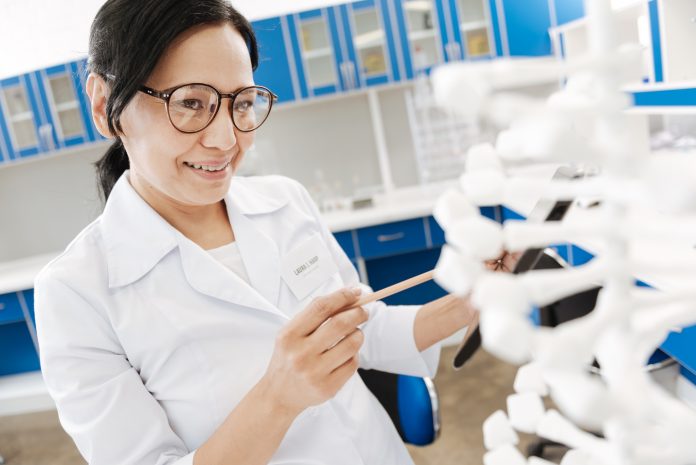Here, Cecilia Van Cauwenberghe from Frost & Sullivan’s TechVision Group argues that single-cell genomics empowers clinical strategies for COVID-19
During the past two years, very specific life sciences areas such as single-cell genomics and proteomics have gained increasing relevancy, a fact that can be notably evidenced by observing the number of platforms launched by both established biotechnology companies and entrepreneurial start-ups. Broadly speaking, these companies aim to provide the lowest cost per cell tool. This quest is significantly driving innovation among technology developers while attracting important funding resources from venture capitalists in one of the most prominent areas to invest in when it comes to the life science industry. However, although meaningful technological advances are taking place, allowing the cost per cell to be reduced, data complexity challenges remain unmet. On that note, analytical tools and bioinformatics solutions, empowered by artificial intelligence (AI) and machine learning (ML) approaches facilitate the analysis of single-cell data, where remarkable opportunities are found.
Key aspects of single-cell genomics
According to Frost & Sullivan, single-cell analytic tools compose a global market expected to reach $1.32 billion by 2023, growing with a compound annual growth rate (CAGR) of 17.8% (Jain, 2019). It is important to highlight the preponderant role of microfluidics and nanofluidics technology in the achievement of higher throughput and low cost per cell. Presently used methods for single-cell genomics still pose some challenges for broad applications. Cell isolation drawbacks may lead to some lack of efficiency. Similarly, the introduction of artefacts, measurement bias, genome loss mutations, and chimeras, need to be minimised during the amplification of the DNA. Because of the relevancy of taking into consideration the whole workflow comprising cell isolation, library preparation and genomic analysis, strategic partnerships gain increased attention as enablers for the smooth integration of high-throughput workflow instruments capable of processing 10,000 cells in one run and parallel, and final data analysis exhibiting an efficient alignment, visualisation and storage of the information.
Precisely, this synergy between life sciences research, microelectronics, material sciences and bioinformatics has not only helped to overcome the aforementioned challenges but also paved the way for single-cell genomics to become a reality (Van Cauwenberghe, 2020). Indeed, the business ecosystem has significantly increased the opportunities to partner with technology developers and biopharmaceutical companies to accelerate target validation and antibody screening by harnessing the power of single-cell genomics. New business models such as Single-Cell Analysis–as a Service are emerging as the result of the establishment of single-cell cores around the world, which perform sequencing and analysis as a service.
Single-cell genomics tools for COVID-19 outcomes
One of the most important roles of genomic medicine relies on achieving an in-depth understanding of the role played by genetic variations in both health and disease cell status. Indeed, the identification and study of genomic variants have allowed hundreds of thousands of disease-associated aspects to be revealed (Piñero et al., 2019).
Although the key immune cell behaviour during the course of COVID-19 remains unclear (Wen Wen et al., 2020), single-cell genomics holds the ability to identify host genomic factors well known to increase either the susceptibility or the resistance to the complications caused by COVID-19, while allowing translating these findings to personalised care (Hemly et al., 2020). Furthermore, genome-wide association studies (GWAS) and multi-omics profiling can be combined to unearth common variants and signaling pathways triggering host-pathogen associations (Murray et al., 2020). The prompt discovery of these interactions may enable the development and implementation of new clinical strategies that improve the evolution of patients infected with SARS-CoV-2.
Remarkably, single-cell genomics is helping scientists and clinicians to unveil the reasons why key immune cell subsets alter their states during COVID-19 to get essential clues about immune clearance mechanisms to develop new therapeutic strategies (Wen et al., 2020). Scientists are working to build a cell atlas of the peripheral immune response to severe COVID-19 (Wilk et al., 2020).
Final remarks on genomic sciences
Recent advances in material sciences, microelectronics medical devices and data analytics have allowed exploiting genomic sciences in applications such as single-cell genomics and proteomics tools. Remarkably, it is the role of these advancements that help us understand the essential host-pathogen interactions in COVID-19.
Acknowledgements
I would like to thank all contributors from industry involved with the development and delivery of this article from Frost & Sullivan.
References
- Jain, K. 2020. COVID-19—Implications for the Healthcare Industry, 2020. Annual Outlook. K4D6. Healthcare. Frost & Sullivan Research Services.
- Jain, K. 2019. Global Single Cell Genomics and Proteomics Market, Forecast to 2023. Growth Insights. 9AB9/B9. Healthcare. Frost & Sullivan Research Services.
- Helmy, Y.A., Fawzy, M., Elaswad, A., Sobieh, A., Kenney, S.P. and Shehata, A.A., 2020. The COVID-19 pandemic: a comprehensive review of taxonomy, genetics, epidemiology, diagnosis, treatment, and control. Journal of Clinical Medicine, 9(4), p.1225.
- Murray, M.F., Kenny, E.E., Ritchie, M.D., Rader, D.J., Bale, A.E., Giovanni, M.A. and Abul-Husn, N.S., 2020. COVID-19 outcomes and the human genome. Genetics in Medicine, pp.1-3.
- Piñero, J., Ramírez-Anguita, J.M., Saüch-Pitarch, J., Ronzano, F., Centeno, E., Sanz, F. and Furlong, L.I., 2020. The DisGeNET knowledge platform for disease genomics: 2019 update. Nucleic acids research, 48(D1), pp.D845-D855.
- Van Cauwenberghe, C. 2020. Technological Advances Facilitating Research Across Preclinical Disease Models – Bioengineering Innovations in Preclinical Research. D98E. Growth Opportunity TechVision Engine. Frost & Sullivan Research Services.
- Wen, W., Su, W., Tang, H., Le, W., Zhang, X., Zheng, Y., Liu, X., Xie, L., Li, J., Ye, J. and Dong, L., 2020. Immune cell profiling of COVID-19 patients in the recovery stage by single-cell sequencing. Cell discovery, 6(1), pp.1-18.











